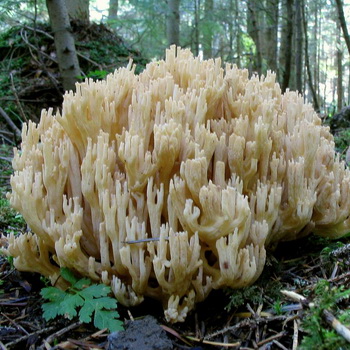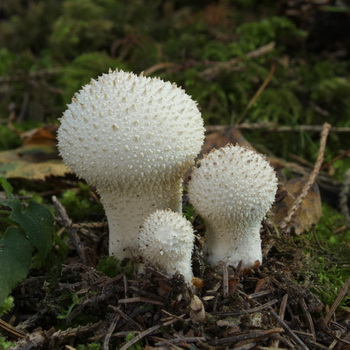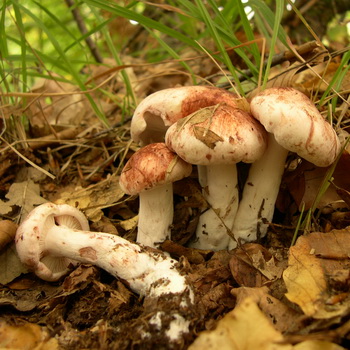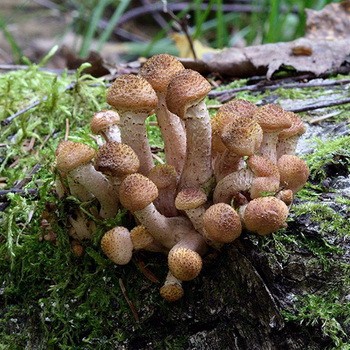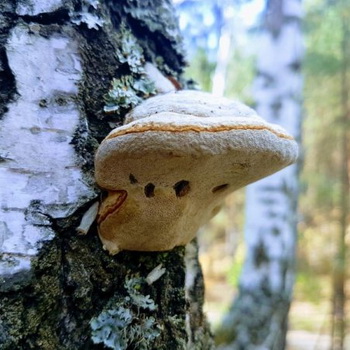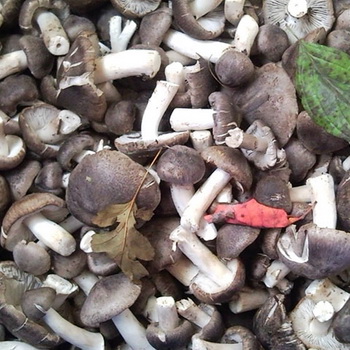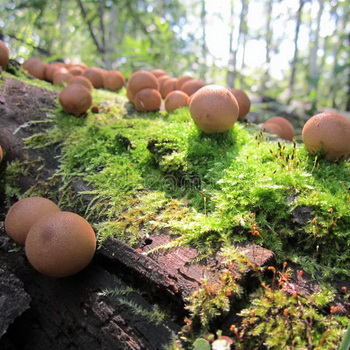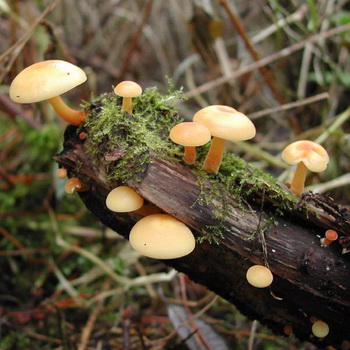Description of mushrooms with wrinkled caps
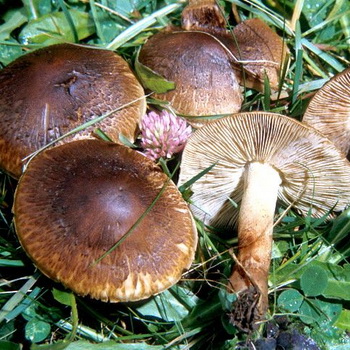
Summer and Autumn Shriveled Mushrooms
Mycena bell-shaped (Mycena galericulata).
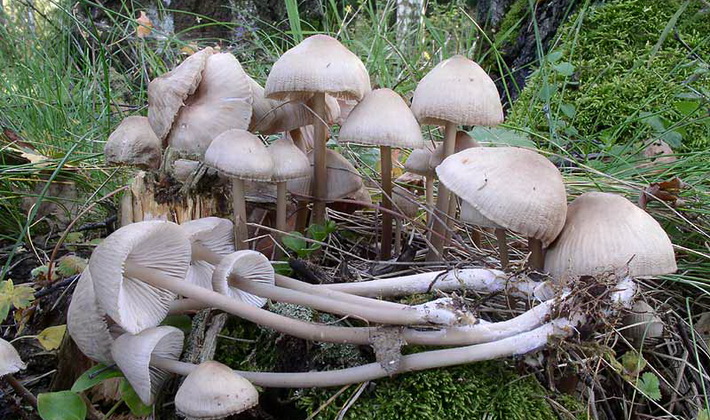
Family: Mycenae (Mycenaceae).
Season: July - the end of October.
Growth: single, in groups, in colonies.
Description:
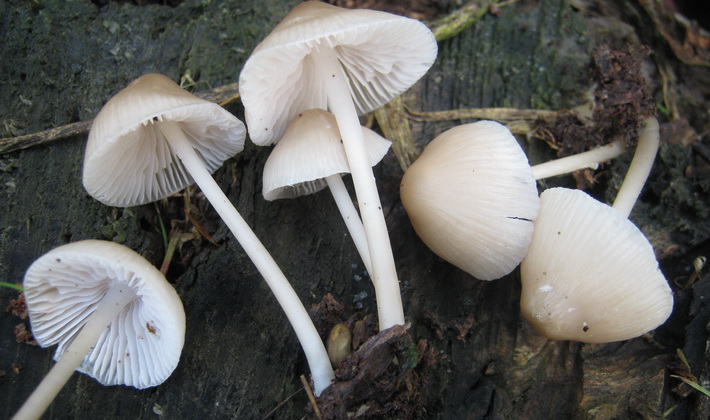
The pulp is dense, grayish, with a powdery odor.
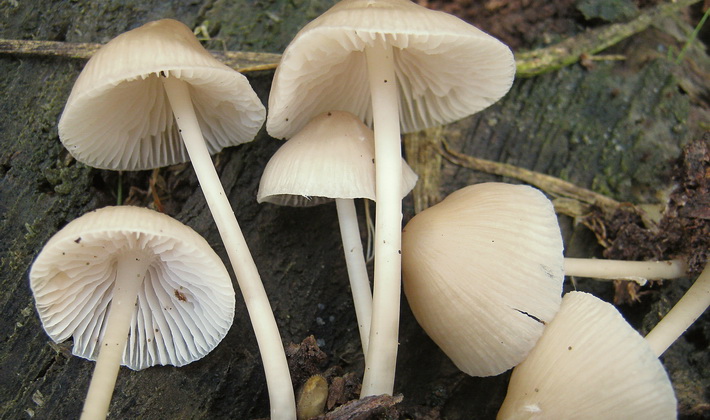
The leg has a root-shaped process up to 7 cm long. The foot is smooth, smooth, matte, hollow, grayish.
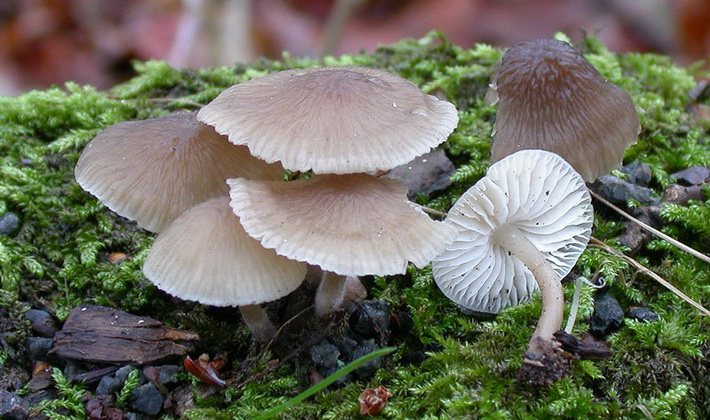
Lamellae with lintels, wide, overgrown, whitish. The hat is first bell-shaped with a high tubercle, grayish-brownish, then - open, wrinkled, grayish-brownish.
This summer-autumn wrinkled mushroom does not represent nutritional value.
Ecology and distribution:
It grows on decaying hardwood (oak), on stumps and felling.
Money root (Oudemansiella radicata).
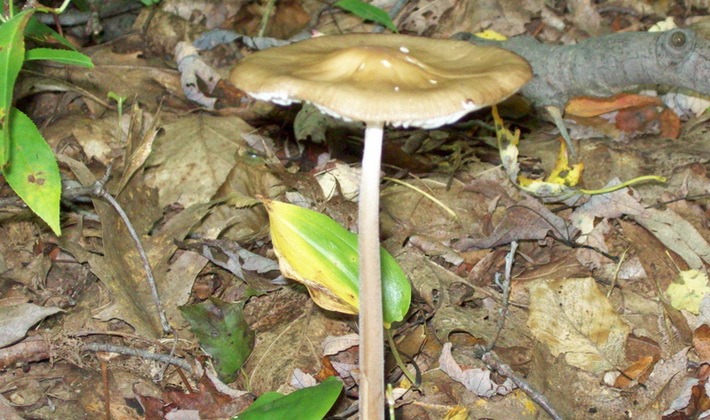
Family: Physalacriaceae (Physalacriaceae).
Season: mid July - end of September.
Growth: single-handedly.
Description:
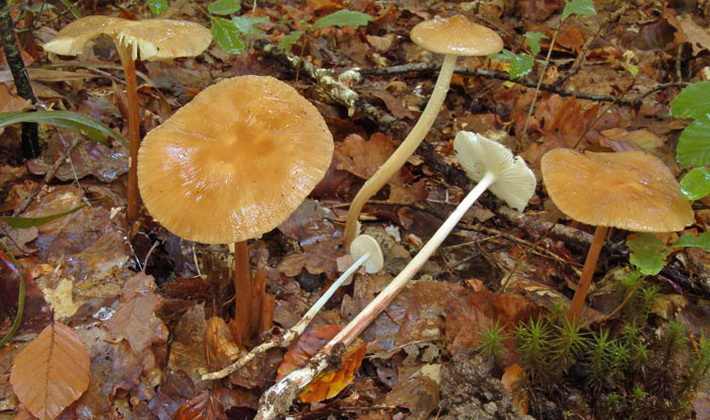
The cap is first hemispherical, then spread out with a tubercle, wrinkled, gray-yellow. In the lower part of the leg is a long root-shaped process.
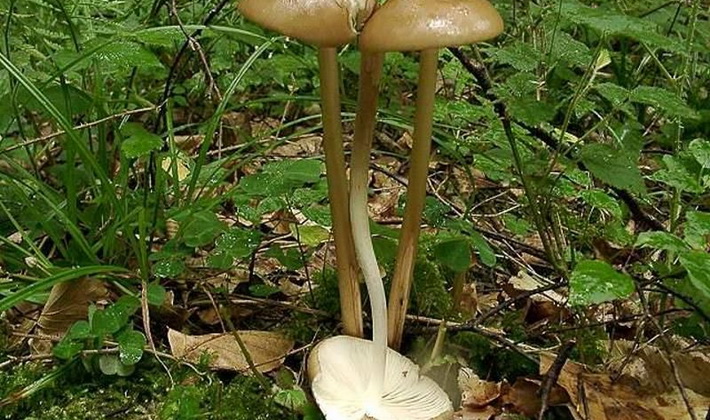
The flesh is whitish or grayish. Rare laminae rare, then free, grayish.
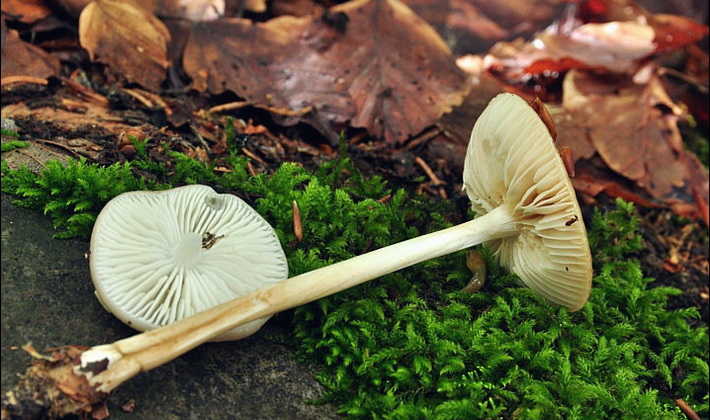
Leg extended to base, deeply immersed in substrate, fibrous, light above, brownish at base.
Caps are used fresh (boiling for about 15 minutes).
Ecology and distribution:
It grows in deciduous, less often in coniferous forests, in parks, at the base of trunks, at stumps and on roots.
Umbrellas (Pluteus umbrosus).
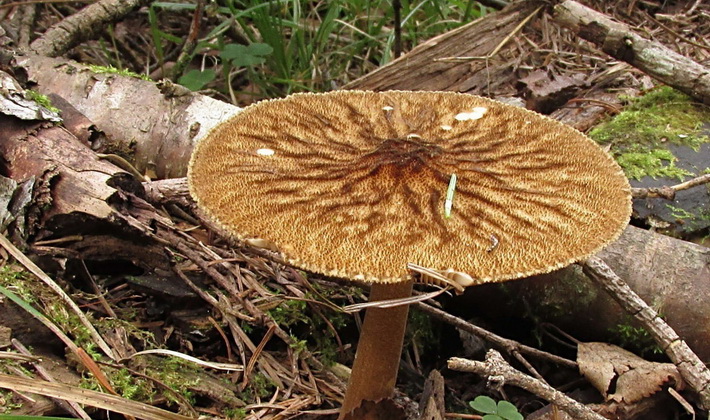
Family: Plyteevs (Pluteaceae).
Season: mid July - end of September.
Growth: singly or in small groups.
Description:
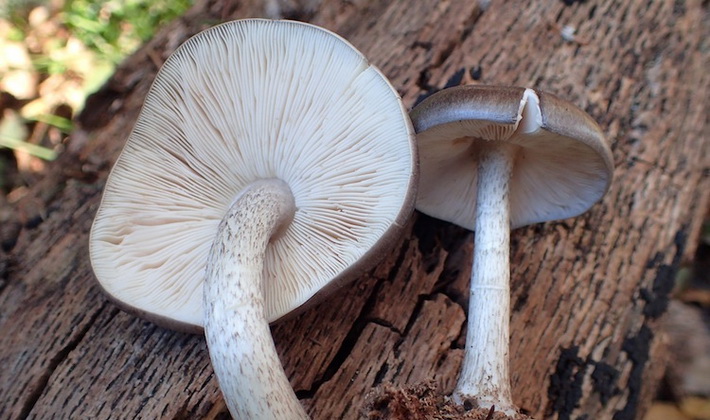
The pulp is whitish, with a bitter taste and a rare smell. The plates are free, wide, frequent, whitish, pink with age. The edge of the cap is with a serrated fringe of hairs.
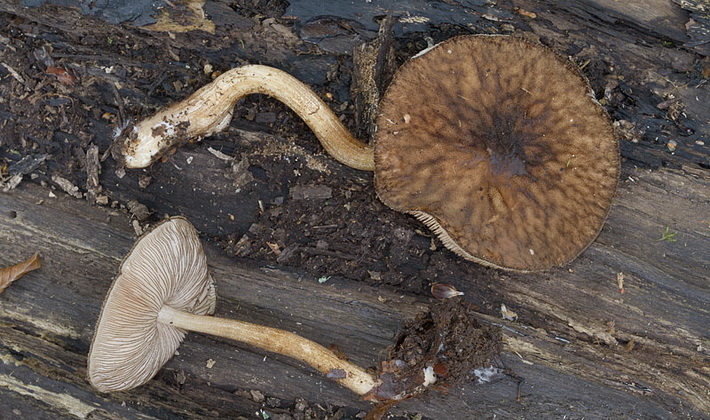
The leg is solid, dense, brownish, with longitudinal dark fibers and small scales.
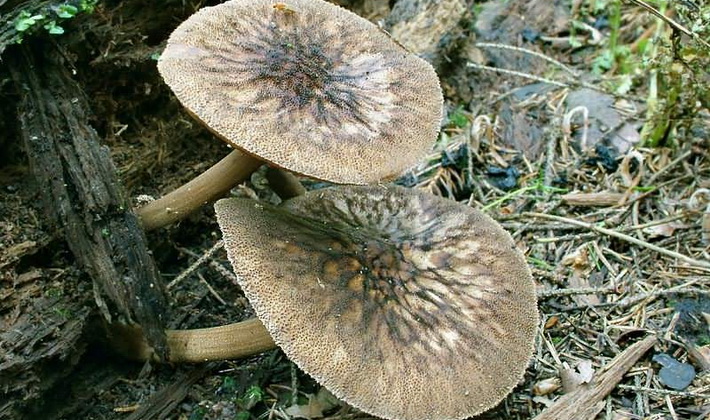
The hat is semicircular or prostrate, whitish or dark brown wrinkled.
Conditionally edible summer-autumn mushroom. The bitter taste of the flesh disappears when boiled.
Ecology and distribution:
It grows in coniferous, mixed and deciduous forests, on decaying hardwood, stumps, branches, immersed in the soil. It is relatively rare.
Radiant fungus (Inonotus radiatus).
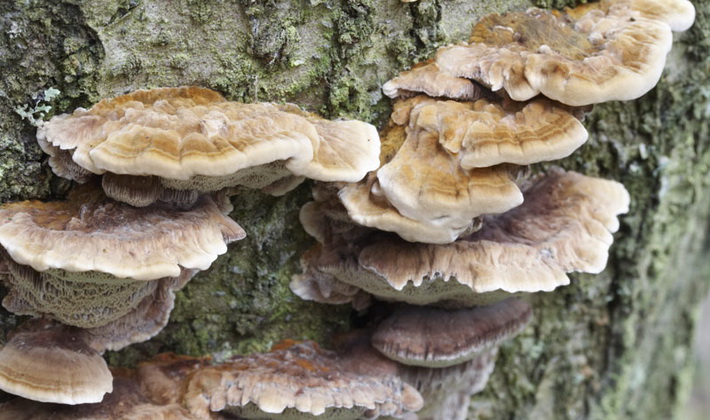
Family: Gimenokhetovye (Hymenochaetaceae).
Season: July - October.
Growth: fruiting bodies are usually arranged in tiers or rows, can grow together on the sides.
Description:
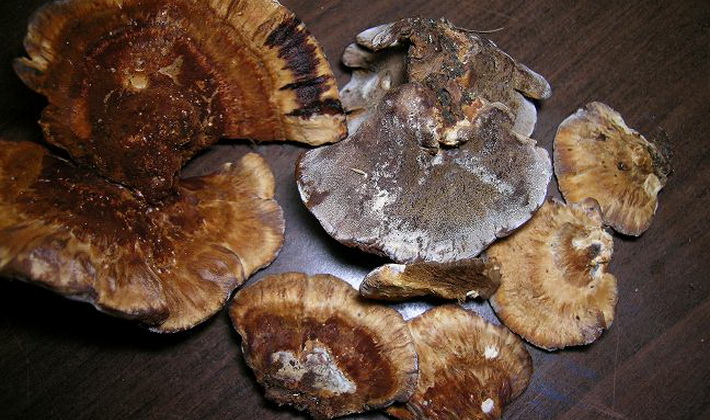
Fruit bodies are annual, flat, semicircular. The surface is radially wrinkled; in young specimens, it is felt, yellow-orange, with age it becomes bare, rusty-brown.
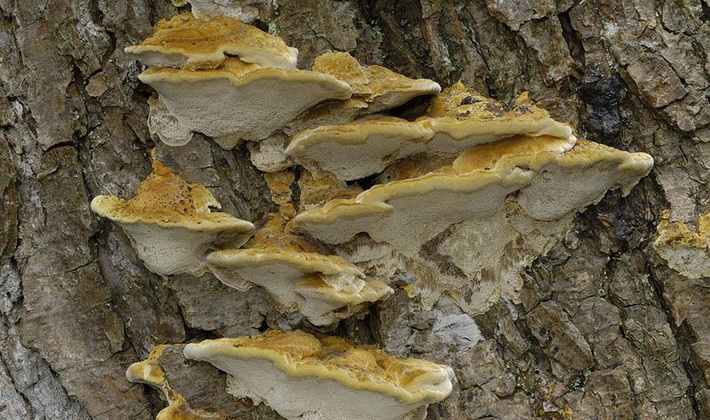
The hymenophore is tubular, light, turning brown from touch, darkens with age.
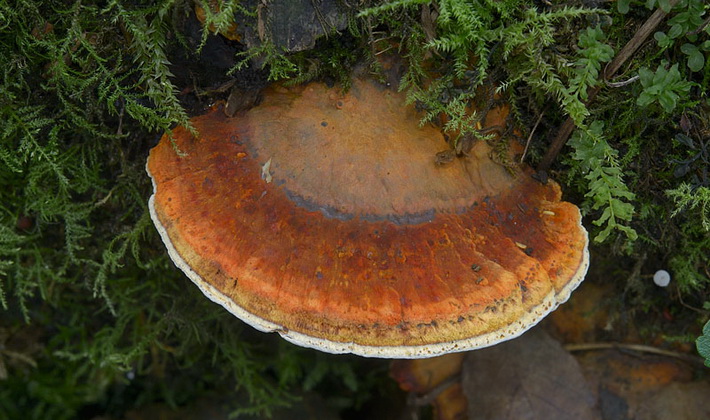
When ripe, the surface with pores becomes glossy.
Inedible.
Ecology and distribution:
It grows on living and dead trunks, branches, stumps of alder, aspen, linden, birch, hornbeam and many other deciduous trees. Causes white mixed (central and peripheral) rot.
Mushroom-ram (Grifola frondosa).
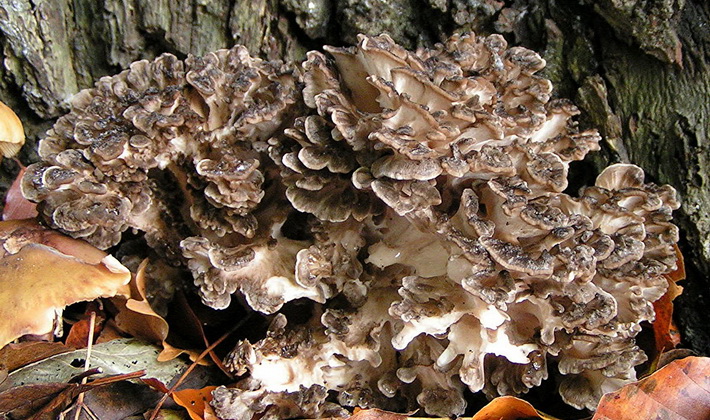
Family: Phomitopsis (Fomitopsidaceae).
Season: mid-August - end of September.
Growth: single and in groups.
Description:
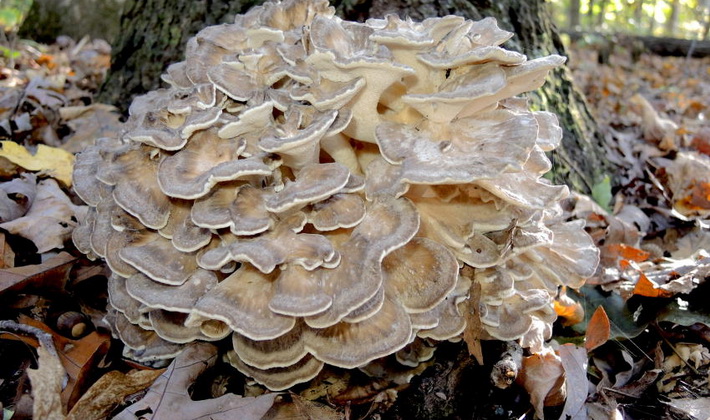
Hat 3-5 cm in size, tongue-shaped, radially wrinkled or fibrous with a thin matte skin of gray-brown tones. Fruit body weighing up to 10 kg, bushy-leafy, spherical or oval, branched into numerous blade-hats.
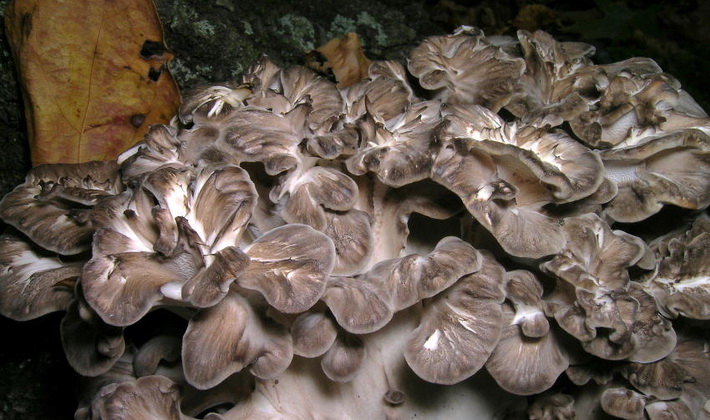
The hymenophore is finely porous, descending to the leg, light. The flesh is elastic, tough, light with age, with a pleasant pungent odor and spicy rare taste.
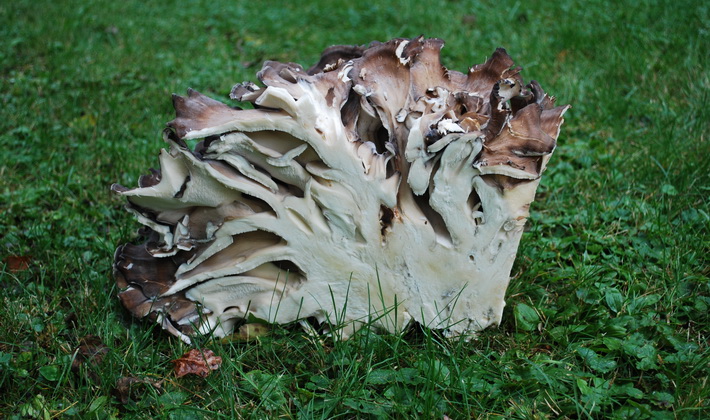
Leg: each hat is 3-4 cm long, eccentric, flock, longitudinally pitted, whitish.
Good edible summer-autumn mushroom mushroom (requires preliminary boiling). It has medicinal properties.
Ecology and distribution:
It grows in deciduous forests at the base of old oaks, less often maples (in the south near beech and chestnut trees). It is rare. It is listed in the Red Book of Russia.
Year-round shriveled mushroom
Film Auricularia (Auricularia mesenterica).
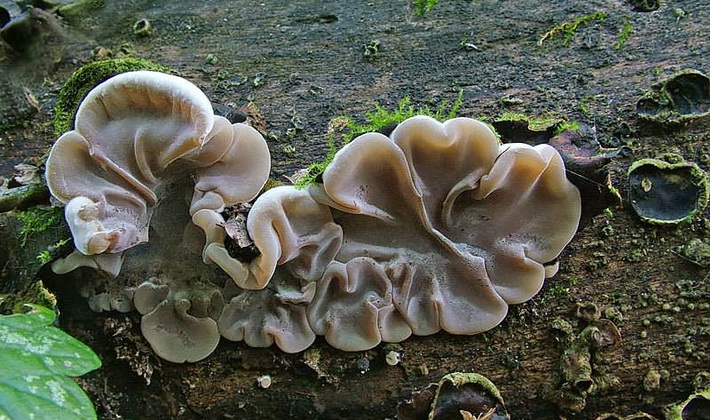
Family: Auriculariales (Auriculariales).
Season: all year round.
Growth: in groups and singly.
Description:
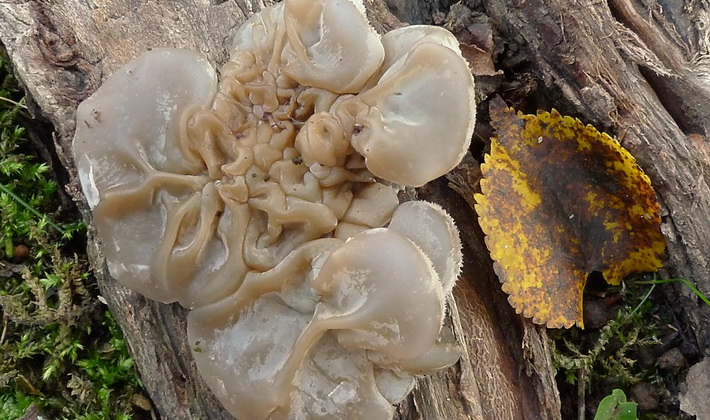
The hat is disk-shaped, straightening to form thin plates. The outer surface is brownish, concentrically zoned, covered with hairs.
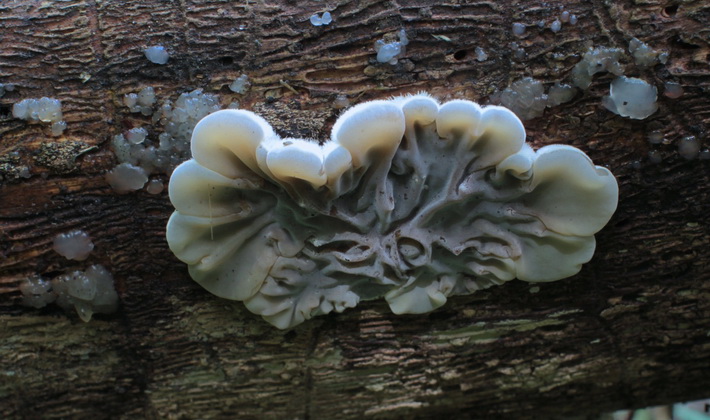
The lower, spore-bearing side is wrinkled, venous, with veins, violet-brown.
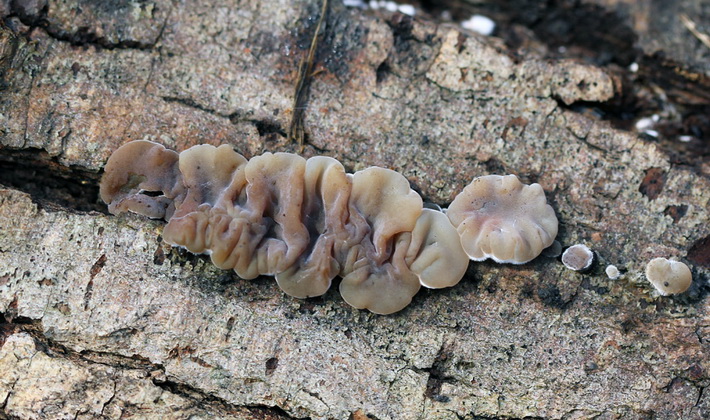
The pulp in the wet state is soft, elastic, elastic, in the dry - hard, brittle.
Edible year-round mushroom of low quality.
Ecology and distribution:
It grows in deciduous, mainly lowland forests on fallen tree trunks: elms, poplars, and ash.
